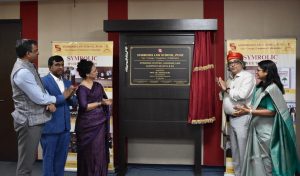Pune: Water Borne Epidemics In Khadakwasla Dam Chain, Bacteria Has Increased 150 Times In 15 Years

Pune, 10th August 2022: Although the Pune Municipal Corporation (PMC) is proud of being the municipality that supplies the purest water in the country, signs indicate that the increasing construction in the dam area and, alternatively, the population will ‘eclipse’ this purity in the coming years.
Due to the increasing population in the catchment area of the dams that supply water to the city, the level of water pollution in the dam is increasing by the day. If the situation continues, the risk of water-borne epidemics in the future increases too.
Pune city is supplied with water from Khadakwasla, Panshet, Varasgaon, and Temghar dams in the Khadakwasla dam chain. At present, the municipality takes 19 TMCs of water from these dams every year. After processing it in water centres, water is supplied to the city which has a population of 45 lakhs.
Pune is known for providing drinking water to its people after purifying it in the highest scientific manner. For this, the administration is more vigilant. Due to this, the spread of epidemics through drinking water in Pune city is almost negligible.
However, in the last few years, the amount of coliform and E. coli bacteria in the water taken from the dam has been dangerously increasing. About 15 years ago, in 100 ml of water, the ratio was 800 to 900. But now, it has increased to around 1.5 lakh. However, in the process of water purification, efforts are being made by the Municipal Corporation to supply bacteria-free water by using chlorine and other chemical processes. In this too, the amount of bacteria in the water taken from Temghar Dam is more. The amount of bacteria in Khadakwasla, Panshet, and Varasgaon dams is also increasing dangerously. The bacteria grows faster in stagnant water, mixed with sludge.
The catchment area of the dams has seen an increase in the number of farmhouses, hotels, and houses in the last few years. As there is no drainage system, the water used in this place is released into streams and drains. The officials of the municipal laboratory have expressed fear that the danger is increasing as drainage water is entering the dams from these streams. These officials have also expressed the need for the administration and the government to take urgent steps to prevent sewage from entering the dams.
“Bacteria such as coliform and E. coli pose a greater risk of spreading infectious diseases such as jaundice. Among these, diseases like jaundice and diarrhoea are mainly caused by E. coli bacteria. This bacteria grows rapidly in stored and open water. Therefore, citizens should take proper care while drinking water that has been stored in the open for a long time,” said Mandar Sardeshpande, Senior Chemist, Municipal Laboratory.
“Drains in societies and water tanks on buildings should be cleaned before and after the monsoon. The water supplied by the Municipal Corporation is fully treated and sterilized. However, if a pipeline leakage is noticed, it should be repaired immediately, as appealed by the water supply department,” Sardeshpande added further.







